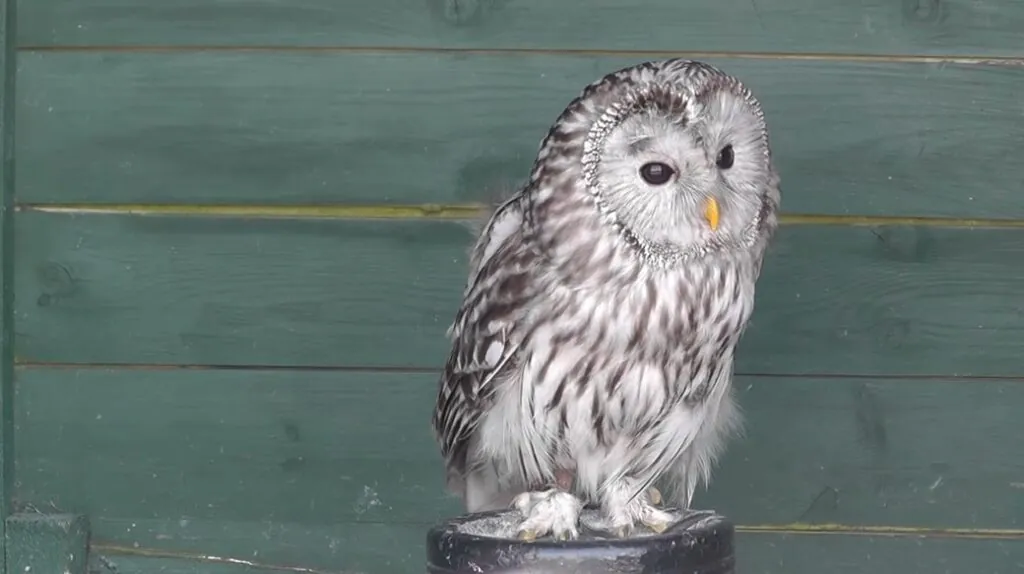Have you ever wondered which animal has the best hearing? Prepare to be amazed as we delve into the fascinating world of the best hearing animals. From the ultra-sensitive ears of the Greater Wax Moth to the impressive echolocation skills of bats, this piece of construct unlocks the top 10 animals with the most extraordinary auditory abilities. Let’s explore how these creatures use their incredible hearing to navigate their environments and thrive in ways that will leave you in awe.
1. Greater Wax Moth

The Greater Wax Moth, known scientifically as Galleria mellonella, holds the title for the best hearing ability in the animal kingdom. This extraordinary insect can detect sound frequencies up to 300 kHz, far surpassing the human hearing range of up to 20 kHz and even the advanced echolocation capabilities of bats, which peak at around 212 kHz.
Researchers at the University of Strathclyde discovered this remarkable ability, which likely evolved as a defense mechanism against predatory bats. The moth’s ears are incredibly sensitive, allowing it to evade its primary predators by detecting their ultrasonic calls. This evolutionary adaptation showcases one of nature’s most extreme examples of auditory sensitivity.
2. Bats

Bats are renowned for their exceptional hearing, which they use for echolocation to navigate and hunt in the dark. Their hearing sensitivity ranges from low frequencies to the ultrasonic, capable of detecting sounds up to around 212 kHz, far beyond the human hearing range of 20 kHz. This ability allows bats to emit high-frequency calls and listen for the echoes that bounce off objects, enabling them to create detailed sound maps of their surroundings.
Bats, one of the top 10 animals with amazing hearing, can even differentiate between the specific frequencies of prey sounds, such as the rustling of insects in leaf litter or the courtship calls of frogs, enhancing their hunting efficiency in various environments.
3. Dolphins

Dolphins possess one of the most remarkable hearing abilities in the animal kingdom, with a range that extends from 20 Hz to an astonishing 150 kHz. This allows them to detect sounds seven times higher in frequency than humans. Their hearing is crucial for echolocation, a sophisticated biological sonar used to navigate and hunt in murky underwater environments where visibility is limited.
Dolphins emit high-pitched clicks from their foreheads, and these sounds travel through water, bouncing off objects and returning as echoes. By interpreting these echoes, dolphins can determine the size, shape, distance, and even the material of objects, including prey hidden beneath the sand.
4. Elephants

Elephants, one of the largest animals in the world, possess an extraordinary hearing ability, capable of detecting sounds as low as 14-16 Hz and as high as 12,000 Hz. This wide range includes infrasound, which is below the threshold of human hearing. Infrasound allows elephants to communicate over long distances, often up to several kilometers, which is essential for maintaining social bonds and coordinating movements within herds. Their large ears not only help in hearing but also aid in cooling their bodies by radiating heat.
Additionally, elephants, one of the best hearing animals, can “hear” through their feet, detecting vibrations from distant sources such as approaching herds or distant thunderstorms by placing their trunks and feet on the ground to sense seismic signals.
5. Owls

Owls possess remarkable hearing abilities that are essential for their nocturnal hunting. They can detect sounds from as low as 200 Hz to as high as 12 kHz, which allows them to hear the slightest rustling of prey in complete darkness. One of the key features contributing to their exceptional hearing is the asymmetrical placement of their ears. This asymmetry helps them pinpoint the direction and elevation of sounds with great precision. The Barn Owl, for instance, can detect the movement of small rodents under the snow from up to 60 feet away due to its finely tuned auditory system.
Owls’ facial discs also play a significant role in sound collection. These discs act like satellite dishes, funneling sound waves to their ears. The medulla in an owl’s brain, the area associated with hearing, contains about 95,000 neurons, three times as many as a crow, allowing for detailed sound processing.
6. Cats

Cats possess an impressive hearing range that extends from 48 Hz to 85,000 Hz, allowing them to detect both high-pitched and ultrasonic sounds that are inaudible to humans. This exceptional auditory ability is due to the unique structure of their ears, which includes a large, cone-shaped pinna that amplifies sound waves two to three times for frequencies between 2000 and 6000 Hz.
Furthermore, cats can rotate their ears up to 180 degrees, enabling them to accurately pinpoint the direction and source of sounds. Interestingly, cats can hear sounds as faint as -5 dB, which is below the threshold of human hearing.
7. Dogs

Dogs, one of the amazing animals with best hearing, possess extraordinary hearing abilities that far surpass those of humans. They can hear frequencies ranging from 40 Hz to 60,000 Hz, compared to the human range of 20 Hz to 20,000 Hz. This extended range allows dogs to detect high-pitched sounds, such as the ultrasonic vocalizations of rodents, which are inaudible to us.
In addition, dogs’ ears can move independently, thanks to over 18 muscles, enabling them to pinpoint the exact location of sounds with remarkable accuracy. Their acute hearing is essential for their roles as hunters, guardians, and even service animals, where they can alert their owners to potential dangers or subtle changes in the environment.
8. Pigeons

Pigeons, one of the prominent animals with amazing hearing, possess exceptional hearing abilities that extend beyond human capabilities. They can detect sounds in the range of 0.05 kHz to 15 kHz, which includes both infrasound and ultrasonic frequencies. This enables them to hear low-frequency sounds such as distant thunder and the wingbeats of large birds, as well as high-pitched sounds that aid in communication and navigation.
Pigeons utilize these auditory cues to create mental maps of their environment, helping them navigate and find their way home over long distances. Additionally, their ability to regenerate sensory hair cells in their cochlea allows them to recover from hearing loss, a capability that humans do not possess.
9. Rats

Rats, one of the top 10 best hearing animals, have an impressive hearing range that spans from 200 Hz to 90 kHz, allowing them to detect both low and high-frequency sounds far beyond the human hearing capacity of 20 Hz to 20 kHz. This extensive range enables rats to communicate using ultrasonic frequencies, such as distress calls from infant rats at 30-50 kHz and high-pitched vocalizations up to 90 kHz to signal danger. Their acute hearing is crucial for detecting predators and locating food sources, contributing to their survival and adaptability in various settings.
10. Humpback Whales

Humpback whales possess remarkable hearing abilities, crucial for their survival and communication in the ocean. They can detect a wide range of frequencies, from as low as 20 Hz up to 24 kHz. This range allows them to perceive both infrasonic and some ultrasonic sounds, aiding in navigation, communication, and prey detection.
Their songs, which can be heard over vast distances underwater, consist of complex vocalizations that play a significant role in mating and social interactions. Humpback whales use their keen hearing to navigate the ocean, detect predators, and communicate through their iconic, intricate songs.
The ranking of the top 10 best hearing animals is based on a comprehensive evaluation of their auditory capabilities and the functional importance of these abilities in their natural environments. These animals were chosen for their exceptional hearing ranges, sensitivity to both low and high frequencies, and the evolutionary adaptations that enhance their survival and communication. This holistic assessment ensures that the rankings accurately reflect the significance of their hearing abilities in maintaining their survival and ecological balance.



